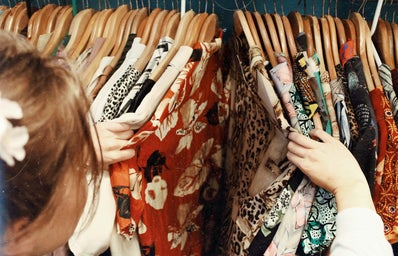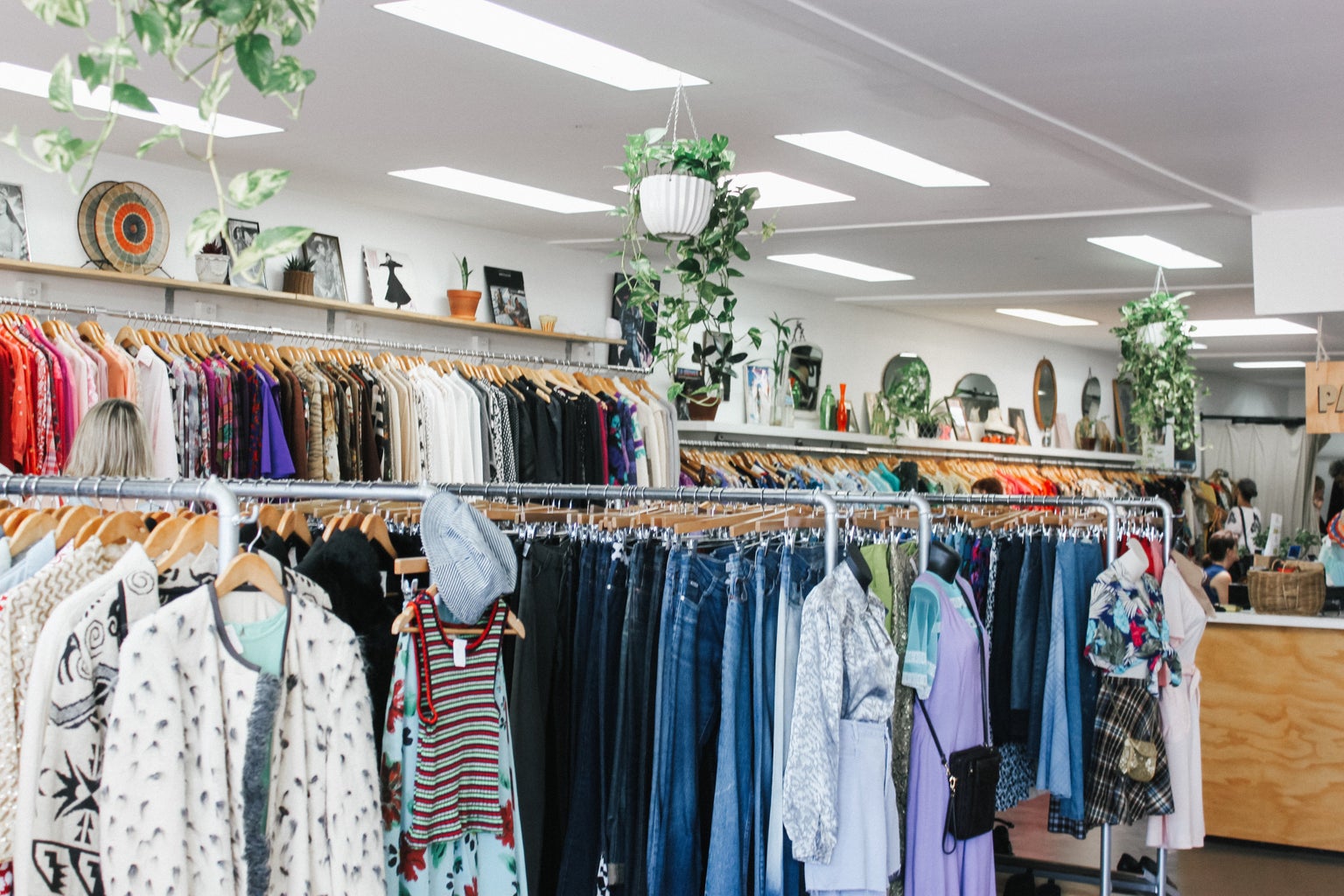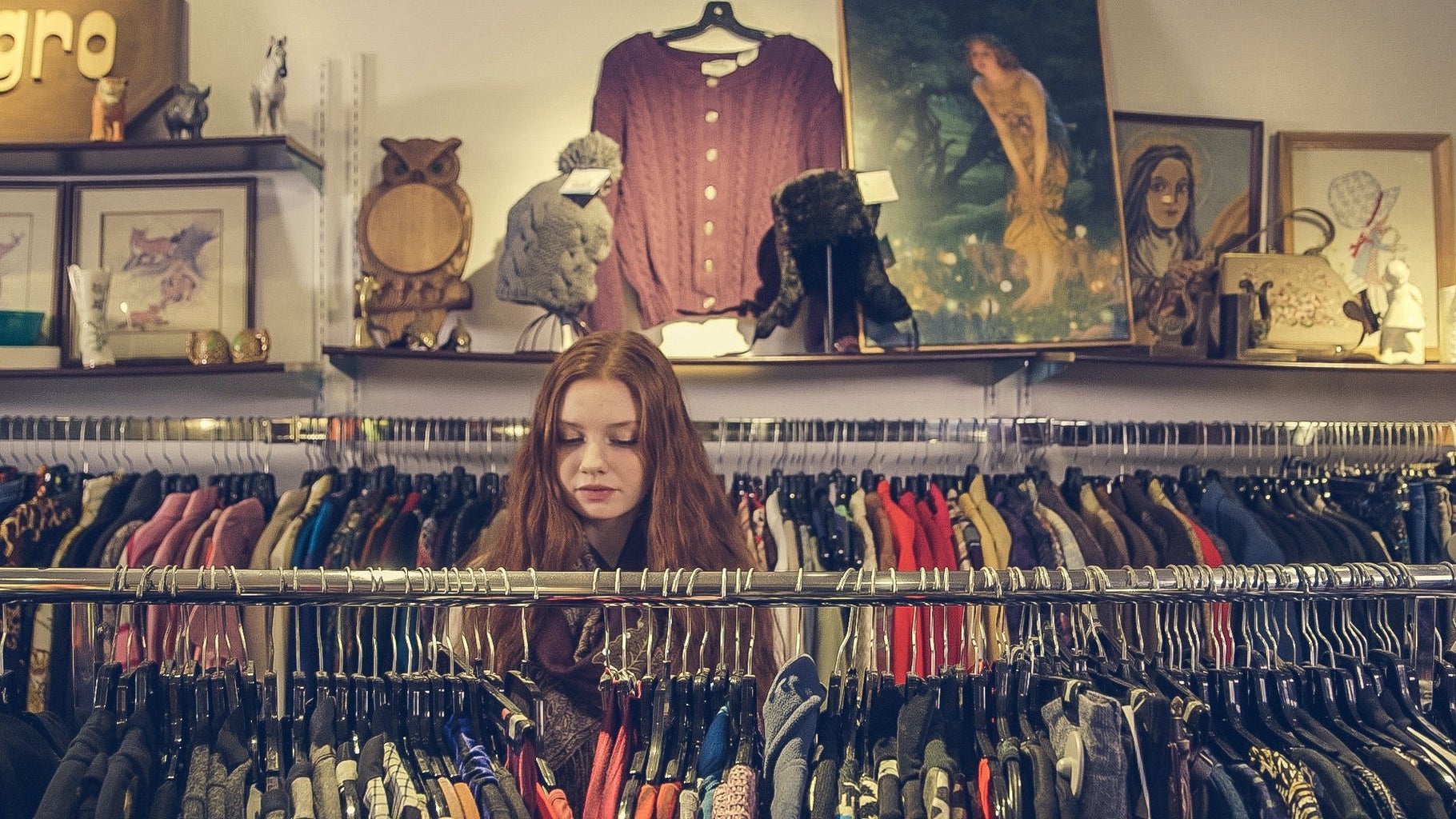For years, thrift shopping was reserved for moms on a budget or poor people who had nowhere else to go. Admitting to wearing a “thrifted” shirt was shameful and no one wanted to set foot in a Value Village, where the racks and racks of clothing looked shabby and unappealing.
But, in recent years, the image of thrifting has changed. No longer is it embarrassing to admit to wearing a pair of thrifted jeans; it’s something to be proud of. In fact, if you’re not thrifting, you’re doing something wrong.
This change in perspective has come hand in hand with the demands of an eco-friendlier existence. The fashion industry is amongst the most wasteful in the world. It’s responsible for 20 per cent of the global wastewater and 24 per cent of insecticide use while contributing two per cent of the world’s GDP as of 2018, a report in Edge Fashion Intelligence found. On top of that, it is estimated that North Americans produce 10 million tonnes of clothing waste every year, according to facts posted by Canada’s Waste Reduction Week in 2019.
Thrift shopping is, without a doubt, more sustainable than shopping fast fashion. But people are still buying clothes and lots of them, so tons of clothes are still ending up in landfills and second-hand markets. And, because the thrift market is changing, it could be making it less accessible to those who need it.
Emma Inns, founder of a boutique in Byward Market called Adorit, says she remembers her first visits to textile factories in the early 2000s that opened her eyes to the environmental impact of fast fashion.
Inns says she visited one community in India where they dyed denim and didn’t have any clean water. The people had nowhere else to go so “they were forced to drink that water that is slowly killing them for us to wear a pair of jeans.”
In recent years, however, Inns found that conditions had slowly improved, and she credits it partly to the growing conversation about sustainable fashion. And at the forefront of the conversation: thrift shoppers, who are increasing by the millions.
Getting “stoked on thrifting”
ThredUp, an online reselling platform, creates annual reports to analyze thrifting trends. They found that 62 million women bought second hand in 2019, compared to 56 million in 2018, meaning more people are buying used instead of new.
“Everyone is just so stoked on thrifting now,” says Chelsea Cochrane, district manager of Plato’s Closet in Ottawa. Plato’s Closet is a consignment store that has been in Ottawa for just six years, but Cochrane has seen an increase in thrift shoppers in that short time.
“If I think about when we first opened six years ago, it was more about people being able to find things for a good price … whereas now, people are more interested in finding an item … that they can get for less than half price. And, because it’s cool now, we see a huge increase in teens and young adults doing it,” Cochrane says.
ThredUp expects traditional thrifting to increase by six per cent compounded annually over the next five years. But, as thrifting has grown, the way people thrift has also begun to change.
Resale is the biggest thing happening to thrift shopping right now. Resellers choose trendy pieces from thrift stores, clothing warehouses, other resellers, and their own closets to be sold online.
Claire Besco uses Depop to sell clothes because she believes it’s the most sustainable way to consume fashion. “Clothing is so accessible but it’s important to slow down and either shop pieces that are pre-owned or higher quality,” she explains.
Besco does her part by finding trendy items and making them available online for purchase, making it possible for more people to buy second hand simply because it’s more accessible. Not everyone has time to sift through aisle after aisle at Value Village to find one trendy top.
By buying directly from thrift stores, Besco is also able to save money. Roots sweatpants, which retail for $78, can be found at thrift stores for just $15. This allows resellers, like Besco, to post them online for $30, so it’s less than retail and she can still make a profit.
ThredUp expects resale thrifting to grow at a rate of 39 per cent compounded annually in the next five years. And as it grows, resellers are building their own identity.
Camille Agpoon started reselling in February 2020 as a way of getting rid of old clothes. Now, she uses her Instagram shop, Road Eight, to sell thrifted items that fit her style.
There are hundreds of stores like Agpoon’s and Besco’s on Poshmark, Depop, and Instagram. Poshmark’s 2020 report found that 76 per cent of users consider resale value before buying something, new or thrifted, and 48 per cent of sellers use the money they make to buy off the app again. All these people are contributing to circular fashion.
In November 2020, Vogue declared the future of fashion to be circular, an idea that was unheard of in an industry that depends on the constant creation of new items. The goal is to ensure everything is being used, therefore reducing waste, whether it’s by upcycling or reselling.
Circularity in Clothing Waste
Ruth McKay, a business professor at Carleton University, explains that the key to circularity is identifying where waste is in the business process.
“We are living and breathing that waste, and we need to identify it and remove it,” McKay says. She explains that giving value to waste is the best way to achieve circularity in a capitalist society. Reselling and upcycling old clothing are some ways of giving value to clothing waste.
Unfortunately, not everything donated to thrift stores or sold at consignment shops makes the cut as a chic addition to someone’s closet. A huge amount of the clothes thrift stores receive ends up in landfills or, as Liz Ricketts explains, in the second-hand market. Ricketts founded the OR, a foundation that works between the U.S.A. and Ghana that looks at how fashion is used to shape societies. The OR works specifically with Kantamanto, the world’s largest second-hand market, Ricketts explains.
There’s very little information about the quantity of clothes thrown out by thrift stores, but there’s enough data to guess that only about 20 per cent of clothes that are donated to thrift stores are actually sold, Ricketts says.
“It’s an intense experience,” says Ricketts. “I’m just seeing people sitting on piles of clothes and walking on piles of clothes, it was just, clothes everywhere.”
Ricketts says that Kantamanto recirculates more clothes than anywhere in the global North and is a model of sustainable practices that many Western brands are trying to adopt. And still, 40 per cent of the clothes that come into Kantamanto end up in landfills.
Ricketts says that Ghana doesn’t have a huge landfill capacity. Clothing waste ends up in gutters, clogging up riverbeds and ending up in the ocean, where they can ruin entire ecosystems.
McKay warns that, “we are degrading our environment in a way that is very difficult to remediate,” so it’s important to take action now.
Siobhan Mullally, an Environment, Resources, and Sustainability student at Waterloo University, points out that there are more sustainable options than thrifting. Mending worn-out clothes or sewing your own from old materials would reduce even more waste.
Buying Into Thrifting
For many, though, thrifting is about more than just sustainability. It’s a trend, and everyone wants in on it lest they be cast out.
“There’s this buzzword: vintage. Even if it’s not good quality, people can just label things [as vintage] and sell them for higher prices,” Mullally explains about how items are sold online for much more than you’d find at a thrift store.
You only need to look at vintage Nike sweaters selling on Depop to see this; some are listed for as much as $200.
Mullally points out that there are still people who depend on thrift stores to get clothes, and the increased trend of thrifting could be driving prices up.
Besco believes that sellers should charge more for items they find because “they’re making it easier for buyers shopping online.”
But the more people are willing to spend on thrifted items, the more thrift stores will be willing to charge. Goodwill’s valuation guide in 2010 gave base prices for each piece, like shirts and blouses were sold at four dollars. Their 2020 valuation guide priced items on a range, so shirts and blouses could be priced anywhere between $2 and $12.
Agpoon says she has noticed the increase in prices at Value Village and understands that they are important to low-income shoppers, but she argues that “it’s the responsibility of the big organizations to make sure items are still affordable to those who need them.”
Prices aren’t the only things changing. Craig Huffman, marketing manager for Goodwill Industries for the Ontario Great Lakes Region, says that Goodwill in his region has shifted into the e-commerce market. As environmental and sustainability issues become more and more popular Huffman says Goodwill’s audiences are expanding. “We are becoming a busier attraction in our stores … certainly we have to look at e-commerce.”
Goodwill picks out trendy items and photographs them to post on their new website. Huffman says that it is a lot of extra legwork, which is why lots of the items they post are usually slightly higher.
Huffman says basics that are sold very cheap remain in the community locations, while items that can be priced higher go online. He explains that it’s because Goodwill would be losing money if their focus for e-commerce was to sell clothes cheaply.
“A lot of people love that hunt, love the find, to go through tens of thousands of items and take the time to do that,” Huffman explains. “Other people are busy, and they really want to go in and have it curated for them.”
As Huffman points out, the profile of Goodwill shoppers is changing. He says that there are more people shopping who have a disposable income whereas, just 15 years ago, Goodwill shoppers were more price conscious.
Goodwill’s innovative store models may be reaching a larger audience, but some argue that these changes in thrifting are keeping clothes away from people who depend on them.
Researchers at Brigham Young University conducted a study about family patterns in local thrift economies in 2010. They found that “lower-income families see second-hand shopping as a necessity, whereas higher-income shoppers view it as a commodity.”
More people thrifting isn’t all bad. At the very least, people are becoming more aware of just how much waste throwing out their clothes creates.
Adorit, owned by Emma Inns, works with designers who use eco-friendly fabrics. Most of them, Inns proudly proclaims, are now manufacturing zero-waste clothing.
She says when she first started Adorit, everyone she worked with was repurposing, but this made their items more expensive because of the extra materials and labour. Now that thrifting and sustainable fashion is a trend, things needed for upcycling are more accessible and people are willing to pay more for eco-friendly pieces. Adorit is a small business that’s a bright spot in the future of fashion, showing circularity in action.
Inns explains that before last year, she didn’t think zero-waste fashion would be possible.
“We’re just talking about circularity like it’s going to magically happen, but it’s going to require millions of human hands,” Ricketts insists. She says the industry needs to discuss what jobs are going to be created, the quality of the jobs, and the compensation the workers will be getting.
She believes, despite everything, circularity is a promising concept, but there is much left undiscussed.




